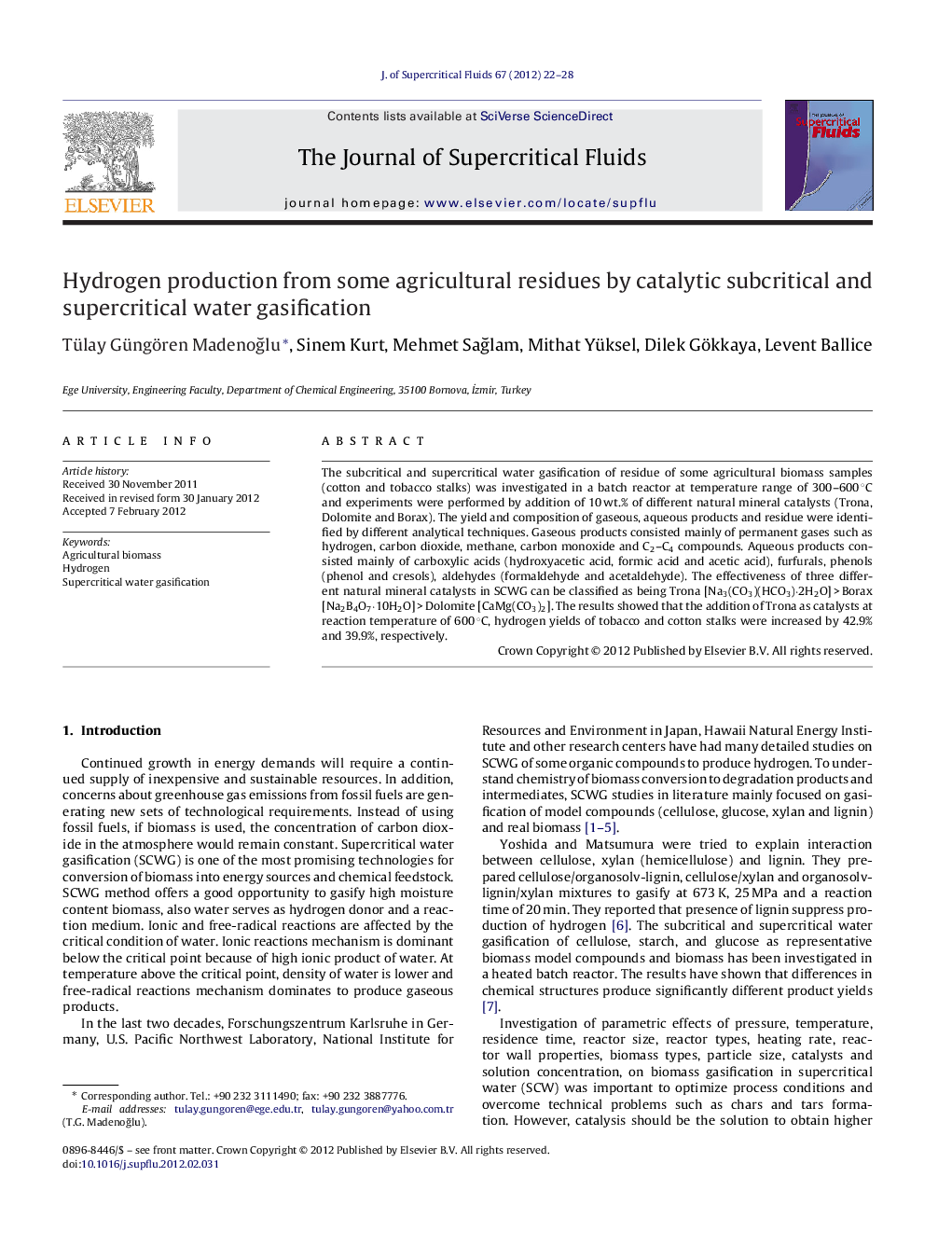| Article ID | Journal | Published Year | Pages | File Type |
|---|---|---|---|---|
| 231023 | The Journal of Supercritical Fluids | 2012 | 7 Pages |
The subcritical and supercritical water gasification of residue of some agricultural biomass samples (cotton and tobacco stalks) was investigated in a batch reactor at temperature range of 300–600 °C and experiments were performed by addition of 10 wt.% of different natural mineral catalysts (Trona, Dolomite and Borax). The yield and composition of gaseous, aqueous products and residue were identified by different analytical techniques. Gaseous products consisted mainly of permanent gases such as hydrogen, carbon dioxide, methane, carbon monoxide and C2–C4 compounds. Aqueous products consisted mainly of carboxylic acids (hydroxyacetic acid, formic acid and acetic acid), furfurals, phenols (phenol and cresols), aldehydes (formaldehyde and acetaldehyde). The effectiveness of three different natural mineral catalysts in SCWG can be classified as being Trona [Na3(CO3)(HCO3)·2H2O] > Borax [Na2B4O7·10H2O] > Dolomite [CaMg(CO3)2]. The results showed that the addition of Trona as catalysts at reaction temperature of 600 °C, hydrogen yields of tobacco and cotton stalks were increased by 42.9% and 39.9%, respectively.
Graphical abstractFigure optionsDownload full-size imageDownload as PowerPoint slideHighlights► We examine effects of mineral catalysts on supercritical gasification of biomasses. ► We studied with biomass samples having different amount of cellulose, lignin and hemicellulose. ► Mineral catalysts increase hydrogen yield and decrease the amount of residue. ► Gaseous product and hydrogen yields were found slightly higher when Trona used as catalyst.
